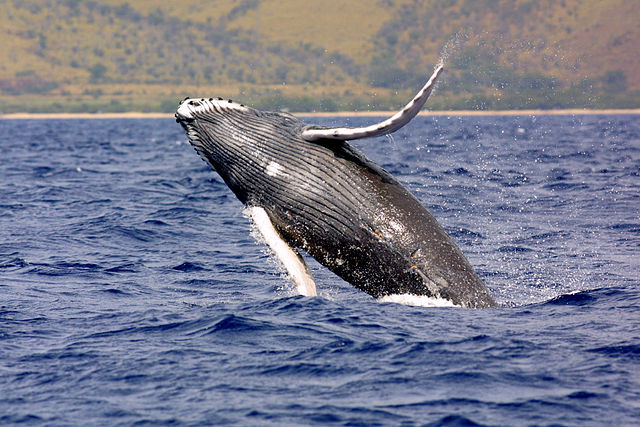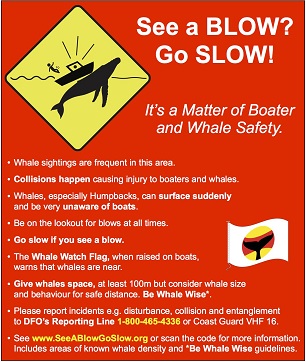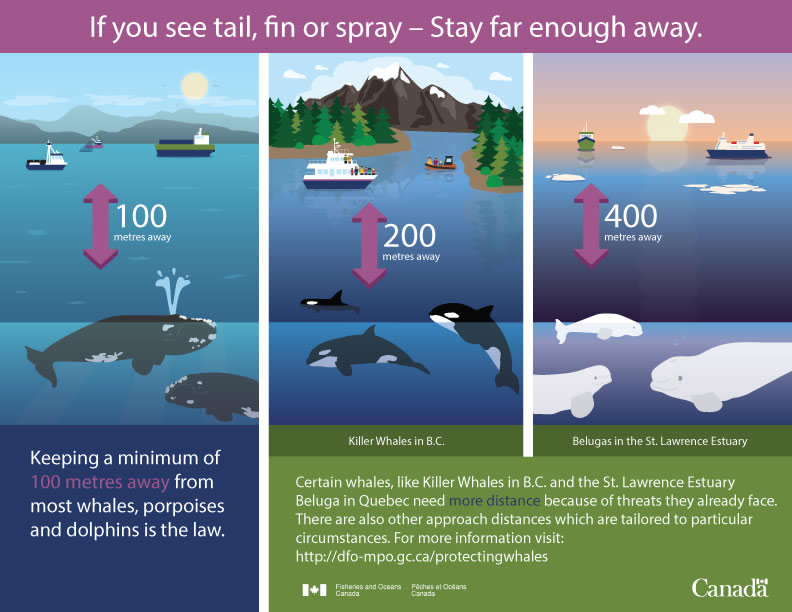Features

As late summer comes to the Sunshine Coast so do the humpback whales. Reports and pictures from coast residents and visitors are being posted on social media. Now is a good time to review the laws concerning whales and encounters with them and also the habits and interesting information scientists have learned about these amazing creatures.
A lot can be learned from Jackie Hildering of MERS (Marine Education and Research Society).Hildering uses her underwater photography and storytelling as "The Marine Detective" to increase awareness of the biodiversity, mystery and fragility of life in the NE Pacific Ocean.
In her informative and sometimes humorous talks, Hildering explains some interesting facts about these special whales that have an ardent following on the Sunshine Coast. She shares with her audience a large barnacle that is only found on the humpback whale, explains how their pectoral fins are so well designed (much the same as a paddle) and how these are "whales that hold their ground".
When they are very active they will breach or leap out of the water. It is believed to be a potent form of communication. They will also make a sound by exhaling under the surface of the water. This could be communicating about boats or killer whales in the area. In the late summer and fall, you can observe trumpeting and blowing which starts under the surface.

Humpbacks have no sonar and are unaware of boats. A program, See a Blow, Go Slow, has been initiated to help educate the public about these whales, their behavior and what to do in the event they see a whale entangled in netting or in distress.
The rules for whale watching and approaching marine mammals provide a minimum approach distance of 100 metres for most whales, dolphins and porpoises to legally protect these animals from human disturbances There are now updated regulations regarding whale encounters on the water from DFO. These include keeping 200 meters from the orcas or killer whales in BC waters.

Be whale wise
While watching marine mammals, you should never:
- feed them
- swim, dive or interact with them
- move, encircle them or entice them to move
- change directions quickly or park your boat in their path
- approach them when they’re resting
- the whale will look like it’s not moving and will be floating at the surface or near the surface
- separate a mammal from its group or go between it and a calf
- trap a marine mammal or a group either between a vessel and the shore, or between a vessel and other vessels
- approach them if there are already several boats present
- approach head on or from behind, as this will cut off their movements
- tag or mark them
- touch, feed or disturb an animal, even if it comes up to a wharf or the shoreline
- approach using aircraft
Since MERS and DFO have collaborated some 47% of entangled whales reported have survived. Boaters should contact via VHF channel 16 or call 1-800-465-4336 for aid. You should then stay with the whale if possible and keep watch until someone comes to help. Disentanglement requires a professional. If you do cut off the upper lines this will eliminate the surface lines that show the whale is entangled but will not remove all the lines.
The humpbacks and fin whales are coming back to the Pacific Northwest. In 1905 there were around 4000, by 1970 there were around 1400. Whales received legal protection in 1966. Currently they are listed as threatened, but they may be reassessed as of special concern.
A study, SPLASH, conducted by 10 countries in 2004 to 2006 estimated there were 18,000 whales. It is estimated that there are more than 3,000 in BC and south Alaska now.
The humpbacks are here because of the food in our seas, especially the herring. They come north to feed in our cold waters and return to warm waters to breed.They are also good indicators of what is happening in our oceans. Many sightings are resights of whales that have come back to feed in an area.
Hildering will be on a lecture tour this fall and will be coming to the Sunshine Coast. She will be in Powell River on Friday, November 2 at 7:30 pm at the Cranberry Seniors Centre to present Lessons Learned from Killer Whales. On Saturday, November 3 she will be at the Nicholas Sonntag Marine Education Centre in Gibsons to present Return of Giants, about the humpbacks.
If you see a whale Hildering hopes that you will report your sighting to MERS. This email address is being protected from spambots. You need JavaScript enabled to view it.
